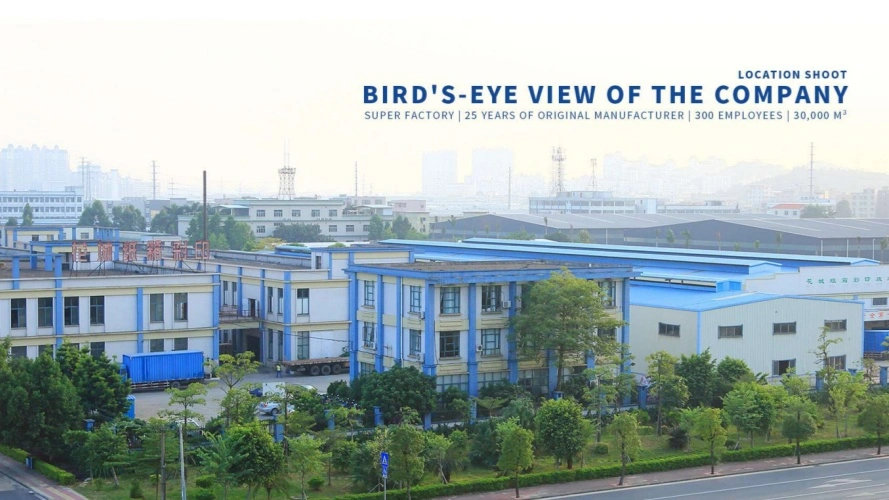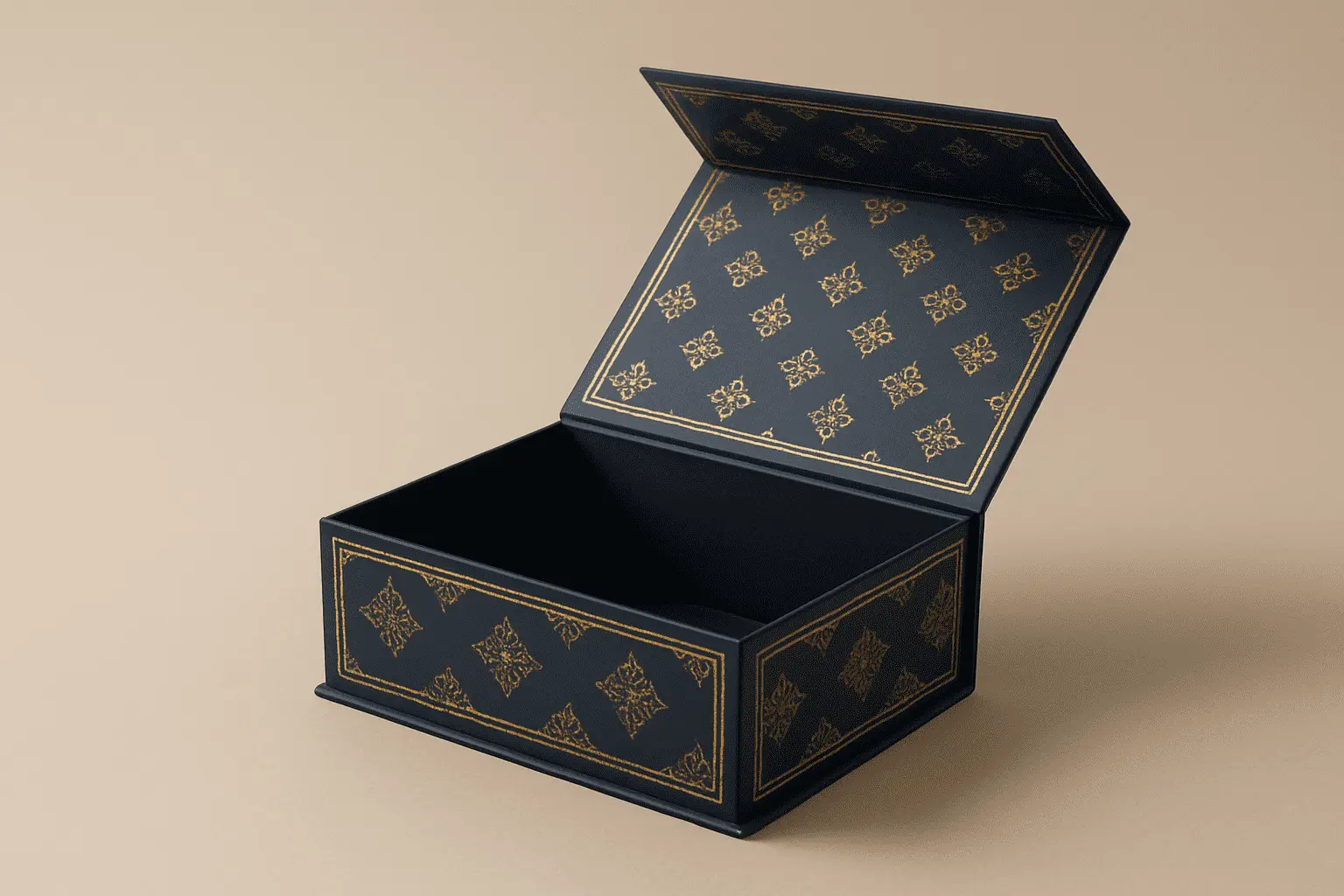Australia's import duty rates for metallic paper box products in 2025 typically range from 0% to 5% depending on the specific classification and country of origin, with most premium packaging falling under HS code 4819.20.00 for folding cartons and boxes. The goods and services tax (GST) of 10% applies universally to all imported packaging materials regardless of duty exemptions. Metallic paper boxes are increasingly favored in Australia's packaging industry for their durability and aesthetic appeal, particularly in luxury goods sectors. Understanding import duties and tariffs is crucial for B2B procurement professionals aiming to optimize cost management and ensure competitive pricing. This guide provides key insights into the 2025 updated import duty landscape, classifications, and strategic sourcing benefits, enabling businesses to make informed import decisions that align with budgetary and compliance requirements.

Understanding Metallic Paper Box Import Duties in Australia
Import duties and tariffs constitute the primary cost factors impacting the landed price of metallic paper boxes in Australia. These charges, levied by customs authorities, are designed to regulate trade and protect local industries but can significantly affect procurement budgets. Proper classification under specific HS (Harmonized System) codes directly influences duty rates, making accurate customs categorization essential for compliant and cost-effective importing. The Australian Border Force applies different rates based on material composition and intended use. Premium packaging with metallic finishes typically falls under HS code 4819.20.00, attracting duty rates between 0-5% depending on the source country. The 2025 updates reflect nuanced rate adjustments depending on box finishes and materials, necessitating procurement teams to stay current to avoid unexpected cost escalations or compliance issues. Key factors affecting classification include substrate material, coating type, and structural design. Rigid boxes with metallic lamination often qualify for preferential rates under various trade agreements, while specialty finishes may attract different classifications. The Australian Customs Service emphasizes accurate documentation to prevent delays and penalty charges that can substantially impact overall import costs.
Factors Influencing Import Costs of Metallic Paper Boxes
Import costs extend beyond base tariffs to include customs valuation determined by the CIF (Cost, Insurance, Freight) principle, where insurance and freight are incorporated into the taxable amount. Additionally, Australia's network of free trade agreements (FTAs) can provide partial or full tariff relief for eligible shipments, presenting valuable cost-saving opportunities. Australia maintains comprehensive trade agreements with major manufacturing regions that can significantly reduce import duties. The China-Australia Free Trade Agreement (ChAFTA), ASEAN-Australia-New Zealand Free Trade Area (AANZFTA), and the Comprehensive and Progressive Trans-Pacific Partnership (CPTPP) offer preferential rates for qualifying products. These agreements often provide immediate duty elimination or phased reductions for packaging materials meeting specific origin requirements. Beyond import duties, GST and compliance-related fees such as inspections influence the total landed cost. Container examination fees, document processing charges, and quarantine inspection costs add layers to the final import expense. Understanding these layered charges is critical for budgeting and negotiating favorable contract terms with suppliers and logistics partners.
Comparative Analysis: Metallic Paper Box vs. Other Packaging Imports
When comparing import tariffs, metallic paper boxes typically attract different duty rates than regular paper boxes, plastic, or cardboard packaging, reflecting differences in material value and sustainability profiles. Standard cardboard packaging often qualifies for zero-duty treatment under most FTAs, while metallic-finished products may incur nominal charges due to their enhanced material composition. The comparative analysis reveals interesting cost dynamics across packaging categories:
- Standard paper boxes: Generally qualify for 0% duty under most trade agreements, with GST being the primary cost consideration at 10%
- Plastic packaging: Attracts varying rates from 0-5% depending on polymer type and manufacturing process complexity
- Metallic paper boxes: Command premium positioning with rates typically 0-3% under preferential agreements, reflecting added value from specialized finishes
While metallic finishes may incur higher duties, they often offer superior brand appeal and durability, contributing to enhanced customer perception and reduced packaging waste. This section delineates these cost-benefit aspects, enabling procurement professionals to balance import tariffs with quality and sustainability goals effectively.
Strategic Tips for Importing Metallic Paper Boxes to Australia
Reducing import costs involves selecting suppliers qualified under relevant FTAs and leveraging bulk orders to optimize duty rates. Accurate and comprehensive customs documentation is vital to avoid clearance delays and fines, with common pitfalls including misclassification or incomplete paperwork. Procurement professionals should prioritize suppliers with established compliance frameworks and proper certification. Working with manufacturers that maintain quality certifications like ISO9001 and environmental standards such as FSC certification ensures smoother customs processing and reduces inspection risks. Bulk ordering strategies can also minimize per-unit costs by spreading fixed import charges across larger volumes. Careful shipment planning—including lead time forecasts and choosing between air or sea freight—can materially affect overall costs and delivery reliability. Sea freight typically offers cost advantages for large volumes, while air freight provides speed benefits for urgent orders. These strategies collectively empower procurement managers to streamline the import process, ensuring competitive pricing and supply chain robustness.
FetchingPrinting: Premium Metallic Paper Box Manufacturing Solutions
FetchingPrinting specializes in designing and manufacturing eco-friendly metallic paper boxes, tailored for global B2B clients across luxury, retail, and manufacturing sectors. With over 20 years of experience and a 35,000 m² manufacturing facility housing 300+ skilled employees, we deliver comprehensive packaging solutions that meet Australian import standards and compliance requirements. Our advanced production capabilities include industry-leading machinery such as KBA106-(9+1) UV printing equipment and Heidelberg XL162-6L printing systems. We offer collapsible rigid boxes in three patented sizes—Large (100-150mm product height), Medium (50-100mm), and Tiny (20-50mm)—delivering up to 60% shipping cost savings compared to traditional rigid packaging solutions. Material options span premium substrates including SBS C1S and C2S for luxury applications, cost-effective CCNB for budget-conscious projects, and authentic brown kraft for sustainable branding. Our metallic paper options feature high-gloss finishes in various shades, instantly elevating perceived luxury while maintaining compatibility with advanced finishing techniques like hot foil stamping, embossing, and UV coating. Quality certifications include ISO14001-2015 Environmental Management, ISO9001-2015 Quality Management, SMETA, G7 Color Management, FSC, and Disney certification. These credentials facilitate smoother Australian customs processing and demonstrate our commitment to international compliance standards. Our R&D department, comprising over ten experienced packaging engineers, provides expertise in material applications, structural development, and process optimization.
Frequently Asked Questions
Q1: What HS code should I use for metallic paper box imports to Australia?
A: Most metallic paper boxes fall under HS code 4819.20.00 for folding cartons and boxes. However, specific classification depends on material composition, size, and intended use. Rigid boxes with metallic lamination may qualify under different subcategories, so consulting with customs brokers or the Australian Border Force is recommended for precise classification.
Q2: Are there any duty exemptions for bulk purchases or specific industries?
A: While bulk purchase volumes don't directly affect duty rates, they can help optimize overall import costs by spreading fixed charges. Certain industries like pharmaceuticals or food packaging may qualify for specialized treatment under specific regulations. Free Trade Agreements often provide the most significant duty relief opportunities regardless of order size.
Q3: How can I reduce GST and other taxes on imported metallic paper boxes?
A: GST at 10% applies universally to imports and cannot be reduced. However, businesses registered for GST can claim input tax credits, effectively neutralizing this cost. Focus on optimizing duty rates through FTA qualification and accurate classification rather than attempting to reduce GST obligations.
Partner with FetchingPrinting for Your Metallic Paper Box Manufacturing Needs
Australian businesses seeking a reliable metallic paper box supplier can benefit from our comprehensive import support and manufacturing expertise. Our team provides detailed consultation on tariff classification, duty optimization, and compliance documentation to facilitate seamless, cost-effective imports. We understand the complexities of Australian import regulations and work closely with clients to ensure proper documentation and classification.
Our streamlined ordering process begins with demand consultation, progresses through solution design and professional implementation, culminating in successful order placement with ongoing support. Advanced production capabilities using automatic visual positioning systems ensure short lead times and consistent quality that meets Australian market standards.
Ready to optimize your packaging procurement with expert guidance on Australian import requirements? Contact us at public@fetchingprinting.com for customized quotations and comprehensive support throughout your import process. Our experienced team will help you navigate duty calculations, ensure compliance, and deliver premium metallic paper boxes that enhance your brand presence while optimizing costs.
Conclusion
Successfully importing metallic paper boxes to Australia requires understanding the nuanced duty structure, leveraging trade agreements, and partnering with experienced manufacturers who prioritize compliance and quality. The 2025 rates continue to favor businesses that invest in proper classification and documentation while working with certified suppliers. FetchingPrinting's combination of manufacturing excellence, regulatory expertise, and customer support provides Australian businesses with a competitive advantage in their packaging procurement strategies.
References
1. Australian Border Force. (2024). "Tariff Classification and Duty Rates for Paper Packaging Products 2025." Department of Home Affairs Publication Series.
2. Department of Foreign Affairs and Trade. (2024). "Australia's Free Trade Agreements: Impact on Packaging Import Costs." Trade Policy Analysis Report.
3. Australian Chamber of Commerce and Industry. (2024). "Import Cost Management Strategies for B2B Procurement Professionals." Business Development Guidelines.
4. Packaging Council of Australia. (2024). "Sustainable Packaging Import Trends and Regulatory Compliance." Industry Research Bulletin.
5. Australian Competition and Consumer Commission. (2024). "Cost Structure Analysis: Imported vs Domestic Packaging Solutions." Market Competition Study.
6. Institute of Export and International Trade Australia. (2024). "Harmonized System Classification Best Practices for Packaging Materials." Professional Development Manual.


